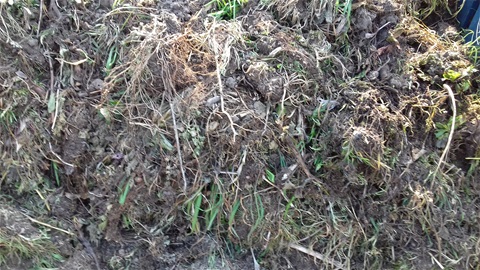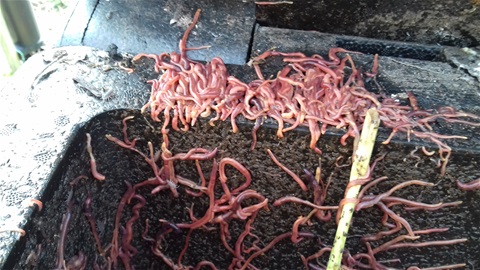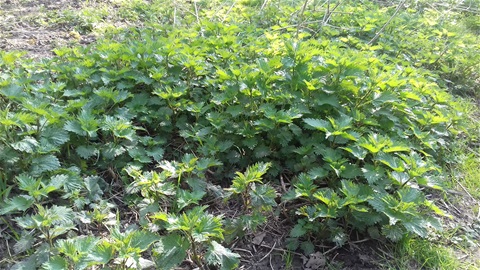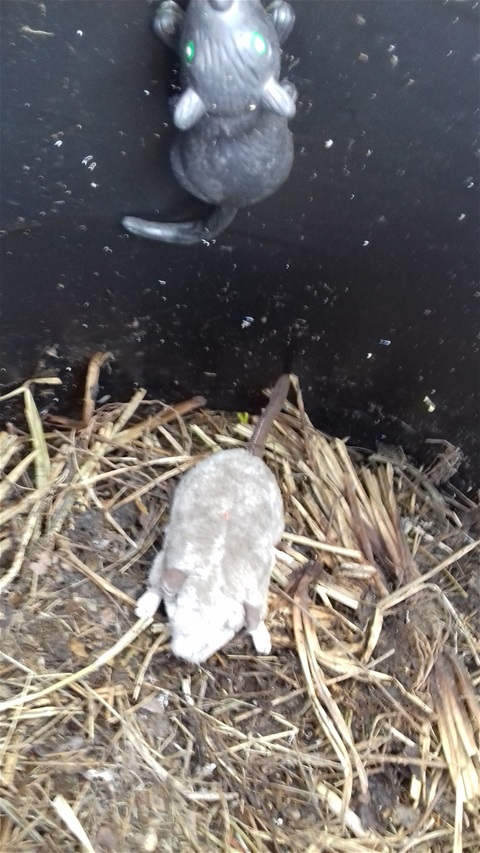This is the first of a series of posts on compost activators.
Typing Compost activator into a search engine will produce details of numerous products and it may well also give details of other products described as Compost Accelerators
and Compost Inoculators. The terms appear to be interchangeable.
It is generally accepted that if a heap or bin does not start decomposing, or is slow in doing so, it is likely to be due to a poor C:N balance with the plant material
containing insufficient nitrogen. Nitrogen is used by the bacteria to build proteins and reproduce while carbon provides a source of food.
Cool Composting
In cool composting i.e. adding waste as it becomes available,
on occasions the necessary green/brown balance and moisture level may not be achieved requiring remedial action to be taken. Normally additional Greens would be added as an organic activator to provide additional nitrogen to correct
the C:N ratio and water or liquid weed/compost feeds added to increase the moisture level. However, if greens are not available blood meal, manure or one of the other activators listed below. Similarly, Greens or other natural activators can be added
in the spring to kick start the composting process as the temperature starts to rise. (photo shows a bin with too many Browns plus fake rats!)
Most compost activators stimulate the composting process to help start or
speed up decomposition by providing additional nitrogen and it is this group we will be lookig at first.
This may be required by the composting microbes when a significant quantity of browns, carbon based materials, are being composted,
e.g. straw, hay, dry leaves, wood chip or related woody materials, making the addition of nitrogen necessary to achieve a good carbon nitrogen balance. The extra nitrogen should result in increased microbial activity and a rise
in temperature. To have a significant effect this temperature will need to be maintained so the bin will need to be insulated to hold the temperature and addition foodstock will need to be added at regular intervals. If the temperature can be increased
by 10oC there should be a doubling of microbial activity. Aerated by turning will also help.
The use of natural activators in the form of more greens can be added to give the correct C:N ratio shown below, are free
and available in the garden.
Suitable greens will have a high nitrogen value and be 'easy' for the composting microbes to breakdown.
The “natural” activators include:
- Green Plants,
e.g. comfrey, clover, grass clippings, nettles, or alfalfa.
- Matured manures (fresh or dry) e.g. chicken, cow, rabbit, pig or less common farmed animals such as alpaca. The manures may be used fresh but it preferable rested
for a season before use because fresh manure can burn plant roots and leaves. Horse manure can be used but it may contain pesticides and undigested seeds. Manure can be added as a layer in cool composting, but it should be covered with browns. Some manures
are available dry or in the form of pellets which can be scattered onto the brown layers of a layered system or when adding material to a cool pile.
- Powdered products such as are blood and bone meal, have also been traditionally
scattered on kitchen scraps and garden waste each time these are added to the bin in the UK while in the US, alfalfa, cottonseed, soybean meal are also used.
- Coffee grounds are relatively rich in nitrogen (up to 2
percent by volume) while coffee chaff from the manufacturing process contains more. . The grounds can be added to cold composting systems as they become available or they can be mixed with equal parts of grass to make a green layer when preparing a hot compost
bin or smaller amounts can be added to each green layer. The Rodale Guide to Composting suggests mixing coffee grounds with lime.
- Human Urine. Many gardening and composting sites recommend adding urine to the compost heap to help speed decomposition.
Containing a relatively low level of nitrogen it consists of about 98% water which makes urine be readily available to the microbes. Urine is probably most effective on dry compost bins. It is difficult to prevent the compost
drying out if using an uninsulated plastic bin in hot weather rainwater, diluted urine or a liquid feed made from soaked weeds can increase the moisture level and give the bin a boost. With cold composting this provides the bacteria with a source
of food which can be digested quickly producing heat rapidly. It can also be added toa hot composting material in New Zealand or pallet bins but is not recommend for composting using a Hotbin
The value of buying commercially available Activators
continues to be the subject of discussion and differing veiws. More information is given using the link Compost Activators (if reading the blog) or http://www.carryoncomposting.com/443725785
To be continued



